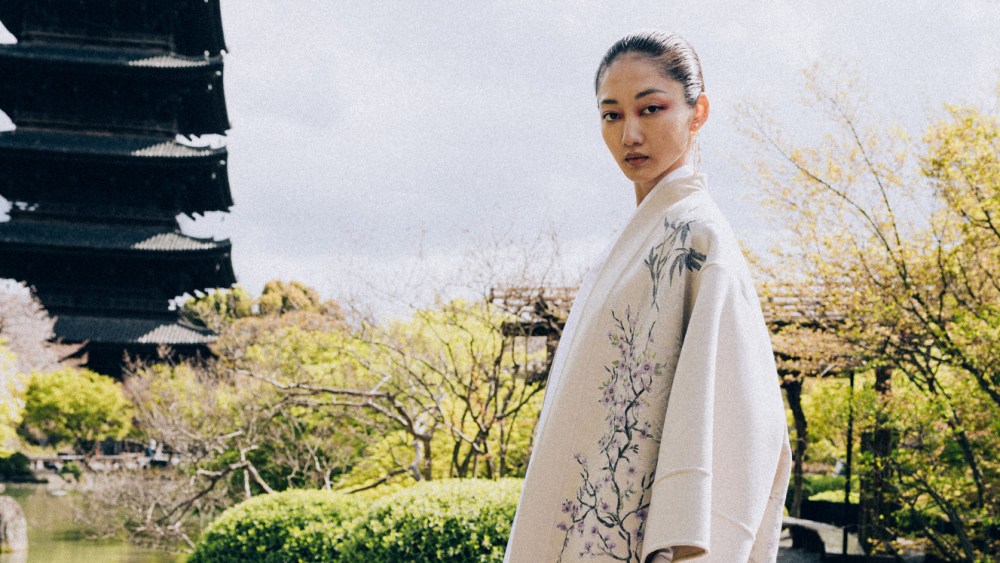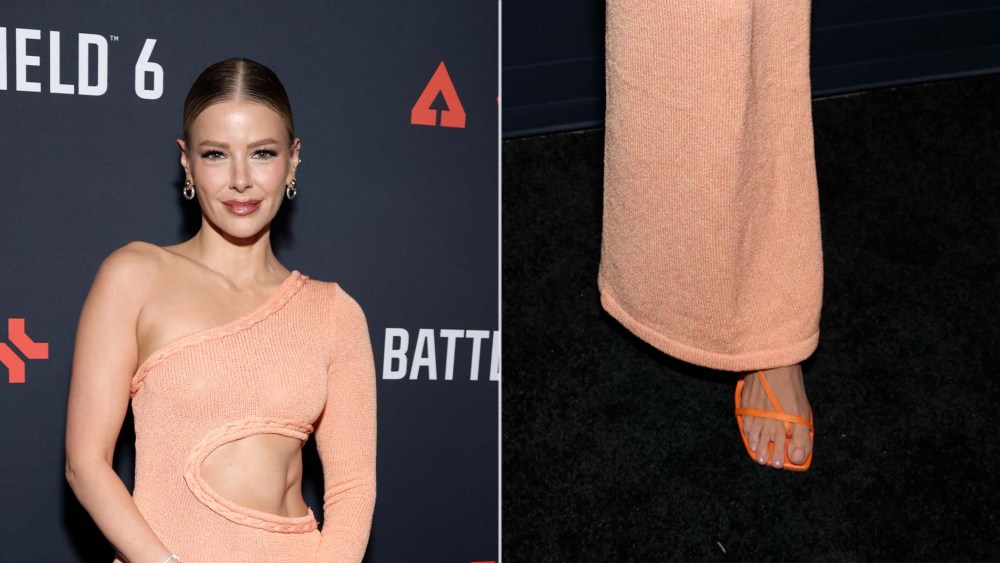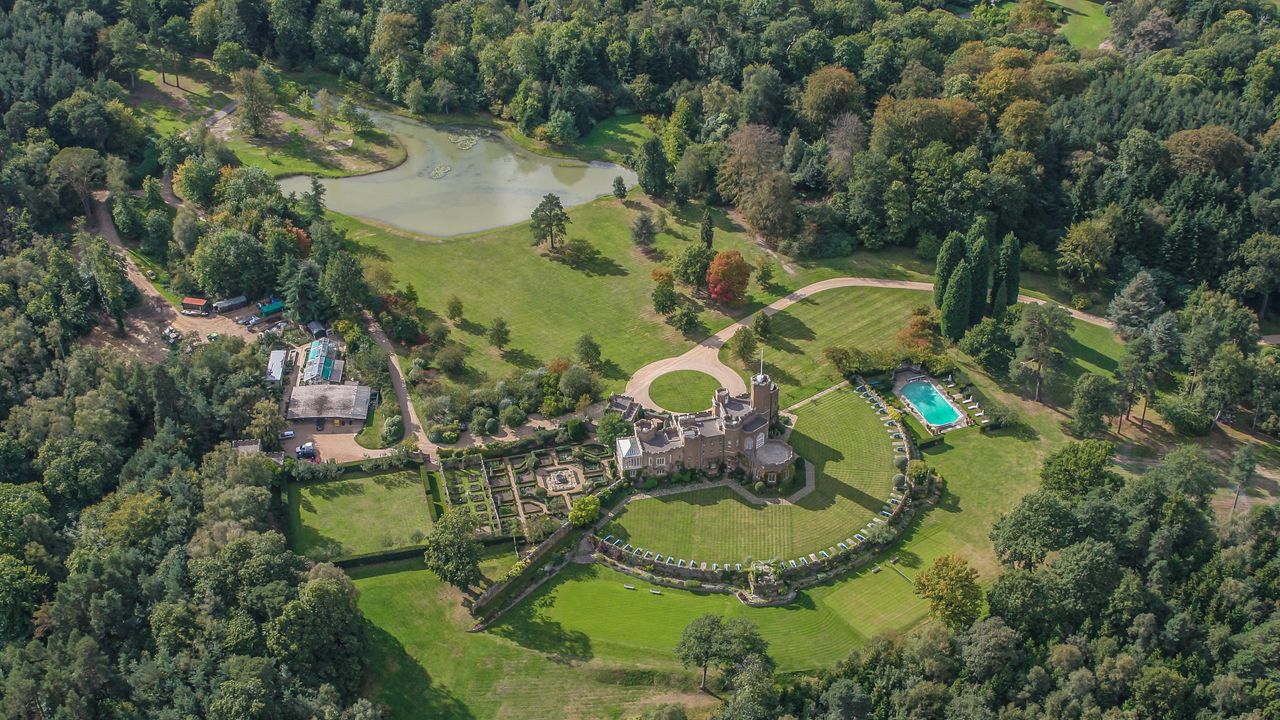
Dior‘s fascination with Japan began with founder Christian Dior in the 1950s, and now that storyline has welcomed a new chapter with Maria Grazia Chiuri‘s Kyoto showcase.
Chiuri’s pre-fall 2025 collection unfolded Tuesday against the fleeting beauty of falling sakura, set within the timeless serenity of Kyoto’s storied Tō-ji Garden — home to one of the city’s oldest temples and Japan’s tallest wooden pagoda.
The scene instilled a delicate softness in Chiuri’s female characters, who seemed to project both the studied grace of geishas and the quiet strength of samurai warriors.
Soundtracked to the organic sounds of Ryuichi Sakamoto and the chimes of Ichiko Aoba (hardcore techno was strictly forbidden inside the serene temple, according to the show’s French DJ Michel Gaubert), the nocturnal showcase offered Chiuri’s spin on founder Christian Dior’s love of Japanese florals, embroidery and his love of garden motifs in a subdued — or as she called it, a “practical” — color palette, with silhouettes that matched the active lifestyles and relaxed dress codes of today.
Being a distinctively Chiuri collection, the silhouettes were sporty, feminine and with a vintage air. Light bomber jackets came with folded collars, denim painter’s jackets were dyed with Edo period spring landscapes, wide-legged jeans came with an asymmetrical pleat that recalled origami folding, and kimono-styled gowns came with sheer options and morphed into knitted dresses that gave the traditional garment an air of nonchalance.

A look from Dior women’s pre-fall 2025 collection.
Su Shan Leong/WWD
Looks were paired with open-toe tabi high boots, ninja-friendly ballet flats, lace-up geta sandals or straw flip-flops, grounding them with a pragmatic and tough stance.
Generous coats and fuller denim suggested respectability and status with heavily embroidered details, while sheer, floor-grazing silk gowns with elongated silhouettes became canvases for poetic embroidery. More precious pieces, inspired by the Japanese aesthetic of “mono no aware” — the bittersweet awareness of impermanence — were rendered in delicate pastel shades.
To honor the house’s long links with local craftsmanship, the collection also featured works by three local artisan workshops and textile companies.
Tatsumura Textile, which created Dior’s first Japanese brocade jacket in 1953, reconnected with the brand after a 70-plus-year hiatus and made two replicas of the original floral jacquard weave in modernized silhouettes; Kihachi Tabata, the legendary textile workshop known for a specialized kimono dyeing technique called Yuzen, was inspired by a motif from Dior’s spring 1953 couture “Jardin Japonais” line, recreating an indigo and pink cherry blossom print, and Yoshiyuki Fukuda, a 90-year-old workshop known for its embroidery work and steam dyeing technology, created landscape prints that expressed Chiuri’s vision of “light shining through the forest.”
For Chiuri, the dialogue with local artisans was almost a dialogue between different couture houses.
“Sometimes in Europe, the idea of fashion is more about the brand, less about the craft, but craft is crucial with Dior, it’s such a very important aspect of the brand,” Chiuri said.

A look from Dior women’s pre-fall 2025 collection.
Su Shan Leong/WWD
“When you speak about craft, silk, prints, it is a language that connects all the community fashion around the world,” she added.
She was also eager to explore new craftsmanship technology deployed by the Kyoto workshops. “At the time of Mr. Dior, there was only couture, everything was done in the atelier for the client, but now, with the new technology, you can do a very good quality but done for pret-a-porter,” Chiuri added.
On a more personal level, Chiuri recalled how traditional Japanese garments crossed into Italy, an incidental result of Japanese designers who took the Western fashion scene by storm in the 1980s.
“The construction of the kimono was very unusual in Europe, we didn’t have these kinds of clothes in our wardrobe,” Chiuri said. “So I remember that I was young, I immediately bought some pieces of vintage kimono to wear with my denim pants.
“The construction [of the kimono] in some way defined the body completely differently, it’s very close to other kinds of clothing, like peplos, like saree, and with your body you define the shape [of the clothes], your body creates the silhouette,” Chiuri continued to explain.
“It is also neither masculine nor feminine, that makes it very interesting,” she concluded.
Last fall, Chiuri visited Kyoto and saw a landmark exhibition at the National Museum of Modern Art, Kyoto that struck a chord.

A look from Dior women’s pre-fall 2025 collection.
Su Shan Leong/WWD
Titled “Love Fashion: In Search of Myself,” the exhibition explored fashion and identity, as well as how the kimono was adopted and furthered by major designers throughout history.
It also displayed Dior looks from the ’50s, including a sharply constructed “La Cigale” gown, which was later widely adopted in the global markets via department stores in America and Japan.
This led Chiuri to further research garments from the same period, including the Diorpaletot and the Diorcoat, which Christian Dior designed to be worn over kimonos while respecting its shape. The sculptural silhouettes helped Japanese women embrace the Dior look, and in turns ushered the brand toward a more relaxed fit.
In Chiuri’s hands, the storied garment took on a utilitarian edge, preserving its relaxed, wrap-style cut while being refined for sartorial relevance. The look was most compelling when paired with Chiuri’s signature white shirt, this time featuring dramatically folded cuffs that offered a subtle nod to origami.
Chiuri’s Kyoto collection helped perpetuate the house of Dior’s connection with Japan, which was also a topic of fascination for Christian Dior’s successors Marc Bohan and John Galliano.
Bohan presented his Mod fashion silhouettes in three Japanese cities for his fall 1964 collection, and Galliano, drawing inspiration from “Madame Butterfly” — a story set in Nagasaki — used Japanese iconography, including origami, porcelain, kimono, embroidery, Katsushika Hokusai waves and ikebana to construct an over-the-top version of Japanese beauty.

A look from Dior women’s pre-fall 2025 collection.
Su Shan Leong/WWD
For pre-fall 2015, Raf Simons also brought his iteration to Tokyo, offering a futuristic take partially inspired by Japan’s anime culture. For spring 2017 haute couture, Chiuri first referenced Japan with a restaged runway show at Dior’s Ginza Six store, with nymph-like gowns adorned with delicately embroidered flowers and bird motifs.
Chiuri’s Kyoto show brought Christian Dior’s longstanding fascination with Japanese gardens to life for the first time — especially the florals and birds that once adorned his childhood villa, now reimagined in a fitting real-world setting.
It also served as the backdrop for Chiuri’s inquiry into fashion and identity — by reinterpreting the kimono, she wanted to start an ongoing dialogue between craftsmanship and culture.
#Dior #PreFall #Kyoto #Full #Blossom








